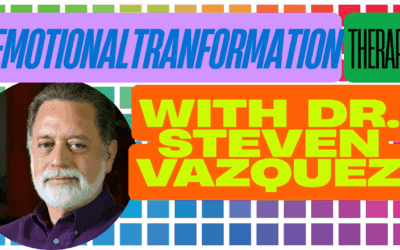What is Zero Balancing?
Zero Balancing (ZB) is a holistic body-mind therapy developed by Dr. Fritz Frederick Smith in the 1970s. This hands-on therapeutic technique aims to align the body’s energy with its physical structure, promoting overall health and well-being. Zero Balancing works with the body’s skeletal system and energy fields to release tension, reduce pain, and improve overall function.
The therapy is based on the principle that energy flows through the body’s tissues, especially the bones. By applying gentle pressure and stretches to specific areas, practitioners aim to clear blockages and restore balance to the body’s energy flow. This process is believed to help clients experience improved physical health, emotional stability, and mental clarity.
Is Zero Balancing Evidence-Based?
While Zero Balancing has gained popularity among practitioners and clients, it’s important to note that the scientific evidence supporting its effectiveness is limited compared to more established forms of therapy. However, some studies and anecdotal evidence suggest potential benefits:
- Pain reduction: Some clients report decreased pain levels after Zero Balancing sessions, particularly for chronic pain conditions.
- Stress relief: Many recipients of Zero Balancing report feeling deeply relaxed and experiencing reduced stress levels.
- Improved body awareness: The therapy may help individuals develop a greater sense of their body and its sensations.
- Enhanced emotional well-being: Some clients report improved mood and emotional stability following Zero Balancing sessions.
- Better posture and mobility: Anecdotal evidence suggests that Zero Balancing may help improve posture and increase range of motion.
It’s important to note that more rigorous scientific studies are needed to fully validate these claims. Most of the current evidence is based on case studies, practitioner observations, and client testimonials. As with many complementary therapies, individual experiences can vary significantly.
A few small-scale studies have been conducted:
- Pratt (2000) conducted a pilot study on the effects of Zero Balancing on work-related stress, finding some positive outcomes in stress reduction.
- Duncan et al. (2011) explored the use of Zero Balancing in supporting patients with advanced illness, reporting improvements in well-being and pain management.
While these studies provide some support for Zero Balancing, larger, controlled studies are needed to establish its efficacy conclusively.
Who Created Zero Balancing and What Led to Its Development?
Zero Balancing was created by Dr. Fritz Frederick Smith, an American physician and osteopath. Born in 1929, Smith had a diverse background that significantly influenced the development of Zero Balancing:
- Medical training: Smith received his medical degree from the University of California, Irvine, and practiced as a physician and surgeon.
- Osteopathic education: He later studied osteopathy, which introduced him to manipulative techniques and the concept of the body as a unified system.
- Acupuncture training: In the 1970s, Smith traveled to England to study acupuncture, becoming one of the first Western physicians to be trained in this Eastern practice.
- Rolfing: Smith also became a Certified Advanced Rolfer, learning about deep tissue manipulation and its effects on posture and movement.
The development of Zero Balancing began in the early 1970s when Smith started experimenting with combining his knowledge of Western medicine, osteopathy, acupuncture, and Rolfing. He observed that by working with the body’s energy and structure simultaneously, he could achieve more profound and lasting results than when working with either alone.
Smith’s diverse background allowed him to bridge Eastern and Western approaches to healing. He sought to create a therapy that addressed both the physical body and the more subtle energy systems recognized in Eastern medicine. This synthesis led to the core principles of Zero Balancing, which he continued to refine throughout his career.
What Were the Influencers and Collaborators in the Development of Zero Balancing?
While Fritz Smith was the primary developer of Zero Balancing, several influences and collaborators played a role in shaping the practice:
- J.R. Worsley: A prominent acupuncturist who taught Smith in England, introducing him to the concepts of energy medicine.
- Ida Rolf: The founder of Rolfing, whose work on fascia and structural integration influenced Smith’s approach to bodywork.
- Yogic traditions: Smith incorporated insights from various yogic practices, particularly in understanding the relationship between energy and physical form.
- Quantum physics: Concepts from quantum physics, particularly the idea of energy-matter interrelationships, informed Smith’s theoretical framework.
- Mary Louise Muller: An early student of Smith who became a key figure in developing and teaching Zero Balancing.
- David Lauterstein: Another early student who contributed to the development of Zero Balancing theory and practice.
The development of Zero Balancing was also influenced by the broader cultural context of the 1970s, which saw increased interest in holistic health practices and the integration of Eastern and Western healing traditions.
What Cultural and Economic Forces Influenced the Development of Zero Balancing?
Several cultural and economic factors contributed to the emergence and growth of Zero Balancing:
- Counterculture movement: The 1960s and 70s saw a surge of interest in alternative lifestyles and healing practices, creating a receptive audience for new therapies.
- East-West integration: There was a growing fascination with Eastern philosophies and practices in the West, facilitating the integration of concepts like energy medicine.
- Holistic health movement: The rise of the holistic health movement emphasized treating the whole person rather than just symptoms, aligning with Zero Balancing’s philosophy.
- Increased stress levels: Rising stress levels in modern society created a demand for effective relaxation and stress-reduction techniques.
- Limitations of conventional medicine: Growing awareness of the limitations of purely pharmacological approaches to health created openness to complementary therapies.
- Wellness industry growth: The expanding wellness industry provided economic opportunities for new therapeutic approaches.
- Personal growth movement: The human potential movement of the 1970s and 80s encouraged exploration of body-mind connections.
- Professionalization of alternative therapies: Efforts to standardize and professionalize alternative therapies helped legitimize practices like Zero Balancing.
These factors created a conducive environment for the development and spread of Zero Balancing as a new therapeutic approach.
What Clinical Practice Issues Did Zero Balancing Address?
Zero Balancing emerged as a response to several perceived limitations in existing healthcare and bodywork practices:
- Mind-body divide: Traditional Western medicine often treated physical and mental health separately. Zero Balancing sought to address both simultaneously.
- Energy-structure integration: While some therapies focused on physical structure and others on energy, Zero Balancing aimed to work with both concurrently.
- Gentle yet deep impact: Zero Balancing offered a gentler alternative to some forms of deep tissue work while still aiming for profound effects.
- Stress-related disorders: The technique was developed partly in response to the increasing prevalence of stress-related health issues.
- Chronic pain: Zero Balancing offered a new approach to addressing chronic pain conditions that were challenging to treat with conventional methods.
- Body awareness: The practice aimed to enhance individuals’ awareness of their bodies, addressing a perceived lack of body-mind connection in modern life.
- Preventive care: Zero Balancing was positioned as a preventive practice, addressing imbalances before they manifested as serious health issues.
- Holistic assessment: The technique offered a way to assess and treat the body as a whole system, rather than focusing on isolated symptoms or body parts.
By addressing these issues, Zero Balancing aimed to fill a niche in the landscape of healthcare and bodywork practices.
How Has Zero Balancing Been Integrated into Other Models or Influenced the Field of Bodywork?
While Zero Balancing remains a distinct practice, it has influenced and been integrated into other bodywork and therapeutic approaches:
- Complementary medicine: Zero Balancing is often offered alongside other complementary therapies in holistic health centers and integrative medicine practices.
- Physical therapy: Some physical therapists have incorporated Zero Balancing principles and techniques into their practice, particularly for addressing chronic pain.
- Massage therapy: Many massage therapists have trained in Zero Balancing, integrating its concepts of energy work into their massage practice.
- Chiropractic care: Some chiropractors use Zero Balancing techniques as a gentler alternative or complement to traditional adjustments.
- Occupational therapy: Zero Balancing concepts have been applied in occupational therapy to address stress-related issues and improve body awareness.
- Mind-body therapies: The emphasis on the mind-body connection in Zero Balancing has influenced other mind-body approaches to health and wellness.
- Energy psychology: Zero Balancing’s integration of energy concepts with physical touch has contributed to the broader field of energy psychology.
- Trauma-informed care: Some practitioners have found Zero Balancing helpful in working with individuals who have experienced trauma, due to its gentle and non-invasive nature.
- Stress management programs: Zero Balancing techniques have been incorporated into some stress management and corporate wellness programs.
- Dance and movement therapy: Concepts from Zero Balancing, particularly regarding the relationship between structure and energy, have influenced some approaches to dance and movement therapy.
While Zero Balancing’s influence is most notable in the field of bodywork and complementary therapies, its holistic approach to health has contributed to the broader trend towards integrative healthcare.
What is the Timeline of Zero Balancing’s Creation, Dissemination, and Development?
Here’s a timeline of key events in the development and spread of Zero Balancing:
1970s: Dr. Fritz Smith begins developing the principles and techniques of Zero Balancing.
1975: Smith teaches his first Zero Balancing class in California.
1978: The term “Zero Balancing” is coined, reflecting the practice’s aim to bring the body’s energy to a balanced “zero point.”
1980s: Zero Balancing begins to spread, with Smith teaching courses in the United States and Europe.
1989: The Zero Balancing Association (now known as the Zero Balancing Touch Foundation) is established to promote and develop the practice.
1991: Smith publishes “Inner Bridges: A Guide to Energy Movement and Body Structure,” the first comprehensive book on Zero Balancing.
1990s: Certification programs for Zero Balancing practitioners are developed and implemented.
2000s: Zero Balancing continues to grow, with increased research interest and integration into complementary medicine programs.
2005: The Zero Balancing Health Association is formed to support and connect Zero Balancing practitioners.
2010s: Increased efforts to conduct research on Zero Balancing and its effects.
2020 onwards: Adaptation of Zero Balancing teaching and practice to online formats due to the global pandemic, expanding its reach.
Throughout this timeline, Smith and his colleagues continued to refine and develop the practice of Zero Balancing based on clinical experience and emerging understanding of body-mind interactions.
How Does Zero Balancing Conceptualize the Body, Energy, and Health?
Zero Balancing has a unique perspective on the body, energy, and health:
Body:
In Zero Balancing, the body is seen as a unified system where structure and energy are intimately connected. The skeletal system is given particular importance, viewed not just as a structural framework but as a key conductor and container of the body’s energy.
Energy:
Zero Balancing recognizes two types of energy in the body:
- Bound energy: This is energy tied up in the body’s structure, particularly in the bones and joints.
- Free energy: This is the body’s flowing, changeable energy, similar to the concept of “qi” in Traditional Chinese Medicine.
The interplay between these two forms of energy is seen as crucial for health and well-being.
Health:
In Zero Balancing, health is viewed as a state of balance and free flow of energy throughout the body’s structures. Imbalances or blockages in this energy flow are thought to eventually manifest as physical or emotional issues.
Key concepts in Zero Balancing’s view of health include:
- Interface: The point where two different tissues meet (e.g., bone to bone, or bone to soft tissue) is seen as a key area for energy transmission and a focus for therapeutic work.
- Fulcrums: These are points of balanced tension created by the practitioner’s touch, around which the body can release tension and reorganize itself.
- Fields: Zero Balancing works with various “fields” in and around the body, including the body’s electromagnetic field and what Smith termed the “field of consciousness.”
- Expanded states of consciousness: Zero Balancing sessions are thought to sometimes induce expanded or altered states of consciousness, which are seen as potentially healing.
This holistic view sees physical, emotional, and energetic health as deeply interconnected, with interventions in one area potentially affecting the others.
What Are the Interventions and Techniques Used in Zero Balancing?
Zero Balancing uses a variety of hands-on techniques to work with the body’s structure and energy. Here are some of the key interventions:
1. Foundation Session
This is the basic protocol of Zero Balancing, typically lasting about 30-40 minutes. It includes:
- Evaluation: The practitioner assesses the client’s energy field and structural alignment.
- Fulcrums: Specific points of contact are used to create balanced tension in the body.
- Joint clearing: Gentle stretches and pressures are applied to joints to release tension.
2. Body Half Balance
This technique involves working with one side of the body at a time, allowing for comparison and integration between the two halves.
3. Finger Fulcrums
Precise finger pressure is applied to specific points, often on bones or at joints, to create a focal point for energy release.
4. Stretch and Pull
Gentle stretching and pulling movements are used to create space in the joints and tissues, allowing for energy flow.
5. Core Fulcrums
These techniques focus on the central structures of the body, including the spine and pelvis.
6. Interface Work
The practitioner works at the interface between different types of tissue (e.g., bone to ligament) to promote better energy conduction.
7. Field Work
Techniques that work with the energy field around the body, not just within it.
8. Framing
This involves clearly defining the boundaries of the area being worked on, helping to focus the therapeutic effect.
9. Vibration and Stillness
Alternating between introducing gentle vibration into the tissues and holding points of stillness.
10. Donkey Ears
A specific technique for working with the skull bones to affect the entire system.
These techniques are typically performed with the client fully clothed, lying on a massage table. The practitioner uses fingertips, knuckles, or palms to apply gentle pressure and create subtle stretches or twists in the body.
It’s important to note that these techniques require specific training and should only be performed by certified Zero Balancing practitioners.
What Are the Goals and Stages of Treatment in Zero Balancing?
Zero Balancing sessions typically follow a structured format, although the specific focus may vary based on the client’s needs. The goals and stages of treatment include:
Goals of Zero Balancing:
- Balance energy and structure: Align the body’s energy with its physical structure.
- Release tension: Clear blocks and tension from the body’s tissues.
- Improve overall function: Enhance the body’s natural healing abilities and overall functionality.
- Increase body awareness: Help clients become more attuned to their bodies.
- Promote relaxation: Induce a state of deep relaxation and stress relief.
- Facilitate emotional release: Support the release of stored emotions or trauma.
- Enhance well-being: Improve overall sense of health and well-being.
Stages of Treatment:
- Initial Assessment:
- The practitioner observes the client’s posture, movement, and energy field.
- A brief discussion of the client’s health history and current concerns.
- Foundation Session:
- The core protocol of Zero Balancing is performed, typically lasting 30-40 minutes.
- This addresses the whole body system, regardless of specific complaints.
- Focused Work:
- After the foundation session, the practitioner may focus on specific areas of concern.
- This could involve additional work on particular joints, areas of pain, or energy blocks.
- Integration:
- The session often ends with techniques to help integrate the changes throughout the body.
- This may include gentle rocking or holding to allow the body to settle into its new state.
- Post-Session Feedback:
- The client is given time to notice changes in their body and discuss their experience.
- The practitioner may offer suggestions for self-care or follow-up.
- Follow-up Sessions:
- Subsequent sessions build on previous work.
- The frequency of sessions can vary based on individual needs, from weekly to monthly or as needed.
It’s worth noting that Zero Balancing is often used as a complementary therapy alongside other treatments. The number and frequency of sessions can vary greatly depending on the individual’s needs and response to the treatment.
In What Contexts is Zero Balancing Usually Practiced?
Zero Balancing is practiced in a variety of settings, reflecting its versatility as a complementary therapy:
- Private practice: Many Zero Balancing practitioners work in private practice settings, offering one-on-one sessions to clients.
- Integrative health centers: Zero Balancing is often offered alongside other complementary therapies in holistic or integrative health clinics.
- Spa and wellness centers: Some spas and wellness retreats include Zero Balancing as part of their treatment offerings.
- Physical therapy clinics: Some physical therapists incorporate Zero Balancing techniques into their practice.
- Chiropractic offices: Zero Balancing may be offered as a complementary service in some chiropractic practices.
- Massage therapy practices: Many massage therapists learn Zero Balancing to expand their range of services.
- Hospitals: Some hospitals, particularly those with integrative medicine departments, may offer Zero Balancing.
- Yoga and meditation centers: Zero Balancing’s focus on body-mind integration makes it a good fit for these settings.
- Corporate wellness programs: Some companies include Zero Balancing in their employee wellness offerings.
- Sports medicine facilities: Zero Balancing may be used to support athletes’ recovery and performance.
- Addiction treatment centers: Some addiction recovery programs incorporate Zero Balancing as a complementary therapy.
- Pain management clinics: Zero Balancing may be offered as part of a multidisciplinary approach to pain management.
It’s important to note that the availability of Zero Balancing can vary significantly by region, as it’s not as widely practiced as some other forms of bodywork or complementary therapy.
What is Unique and Different About Zero Balancing?
Zero Balancing has several unique features that distinguish it from other bodywork and energy healing modalities:
- Integration of structure and energy: While many therapies focus on either physical structure (like massage or chiropractic) or energy (like Reiki), Zero Balancing explicitly works with both simultaneously.
- Focus on bone: Zero Balancing places a unique emphasis on working with the skeletal system as a key conductor and container of energy.
- Fulcrums: The use of “fulcrums” or points of balanced tension is a distinctive feature of Zero Balancing.
- Clothed sessions: Unlike many forms of bodywork, Zero Balancing is typically performed with the client fully clothed.
- Gentle touch: Zero Balancing uses a very light touch, distinguishing it from deeper forms of bodywork.
- Expanded states of consciousness: The therapy aims to facilitate expanded states of consciousness as part of the healing process.
- Interface work: The focus on working at the interface between different types of tissue is a unique aspect of Zero Balancing.
- Holistic assessment: Zero Balancing includes a distinctive method of assessing the body’s overall energy-structure balance.
- Non-diagnostic approach: Rather than focusing on diagnosing specific conditions, Zero Balancing aims to promote overall balance and well-being.
- Client empowerment: There’s a strong emphasis on enhancing the client’s body awareness and self-healing capacity.
Some underutilized aspects of Zero Balancing that could be relevant to modern therapy practice include:
- Stress reduction: The deep relaxation induced by Zero Balancing could be beneficial in stress management programs.
- Trauma-informed care: The gentle, non-invasive nature of Zero Balancing could be valuable in working with individuals who have experienced trauma.
- Chronic pain management: Zero Balancing’s approach to pain, which considers both structural and energetic components, could offer new perspectives in pain management.
- Body awareness training: The emphasis on enhancing body awareness could be integrated into various forms of psychotherapy and mindfulness practices.
- Posture improvement: Zero Balancing’s work with the skeletal system could complement other approaches to improving posture and movement patterns.
Integrating these elements into existing practices could potentially enhance therapeutic effectiveness, although it would require careful consideration and likely additional training.
Bibliography and Further Reading
- Smith, F. F. (1986). Inner Bridges: A Guide to Energy Movement and Body Structure. Humanics Ltd.
- Smith, F. F. (2005). The Alchemy of Touch: Moving Towards Mastery Through the Lens of Zero Balancing. Off The Common Books.
- Hamwee, J. (1999). Zero Balancing: Touching the Energy of Bone. Frances Lincoln.
- Duncan, A. D., Meek, A. S., Smith, F. F. (2011). The Effects of Zero Balancing on Quality of Life for Adults with Chronic Pain. Journal of Alternative and Complementary Medicine, 17(3), 191-197.
- Pratt, S. M. (2000). The Effects of Zero Balancing on Work-Related Stress. Unpublished master’s thesis, Ursuline College, Pepper Pike, OH.
- Quarry, P., & King, A. (2016). Experiencing the Subtleties of Zero Balancing: A Qualitative Study. Journal of Bodywork and Movement Therapies, 20(3), 484-493.
- Rhoads, C. J. (2005). Energy Medicine: Current Status and Future Perspectives. Global Advances in Health and Medicine, 4(Suppl), 5-7.
- Denner, S. S. (2009). The Science of Energy Therapies and Contemplative Practice: A Conceptual Review and the Application of Zero Balancing. Holistic Nursing Practice, 23(6), 315-334.
- Schleip, R., Findley, T. W., Chaitow, L., & Huijing, P. A. (Eds.). (2012). Fascia: The Tensional Network of the Human Body. Elsevier Health Sciences.
- Oschman, J. L. (2015). Energy Medicine: The Scientific Basis. Elsevier Health Sciences.
For further reading, interested individuals might explore journals such as the “Journal of Bodywork and Movement Therapies,” “Complementary Therapies in Clinical Practice,” and “Explore: The Journal of Science and Healing,” which occasionally publish articles related to Zero Balancing and similar complementary therapies.


























0 Comments